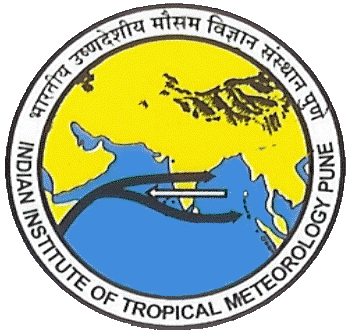ERPAS - 2012
ONSET FORECAST
The forecast of MOK for year 2012 is shown in Figure. The forecasted MOK (05th June) exactly matches with that of IMD. However, there is a standard deviation of 3 days among different ensemble members.
FORECAST SKILL OVER HOMOGENEOUS REGIONS
To assess the forecast skill over the selected regions, correlation coefficients (CC) between the predicted and observed rainfall anomaly are listed in Table for the year 2012 over MZI for CFST126, GFSbc and CFST382. It is observed that CFST126 is performing better at pentad 4 lead (CC values are 0.43 and 0.38 respectively) in 2012.
The ERP skill of active-break spells over the homogeneous regions are shown in
Figure (a),
Figure (b),
Figure (c),
Figure (d),
Figure (e).
Figure shows the categorical probabilistic prediction skills in pentad lead 3 and 4 for CFST126, GFSbc and CFST382.
MISO FORECASTING
Figure show the evolution of MISO from four different initial conditions in 2012. The start dates of forecast are randomly selected to capture active conditions starting around pentad 4-8th September, 2012. The forecast is shown for continuous 25 days. It is clear that, though CFST126, CFST382 and GFSbc show identical behaviour in capturing the phase evolution, the amplitude differs at times with observation. CFS-derived MISO amplitudes show larger over-estimation than GFSbc in general 5–7 days after the start date of forecast.
FORECAST OF TRANSITION TO ACTIVE PHASE
Figure shows the prediction verification for two active spells (4–8th September, 2012) in CFST126, CFST382 and GFSbc and in all the four pentad lead. These pentads represent a transition to the strong active conditions. In 2012 (Figure), the 4–8th September active spell over south-central India and adjoining BoB is well-captured four pentads in advance in CFS126 run compared to GFSbc. Again, CFST382 run shows similar performance to that of CFST126. Thus, the transitions to active spells are predicted well in advance both in CFST126 and T382 run with better skill in terms of spatial patterns of observed distribution of.
